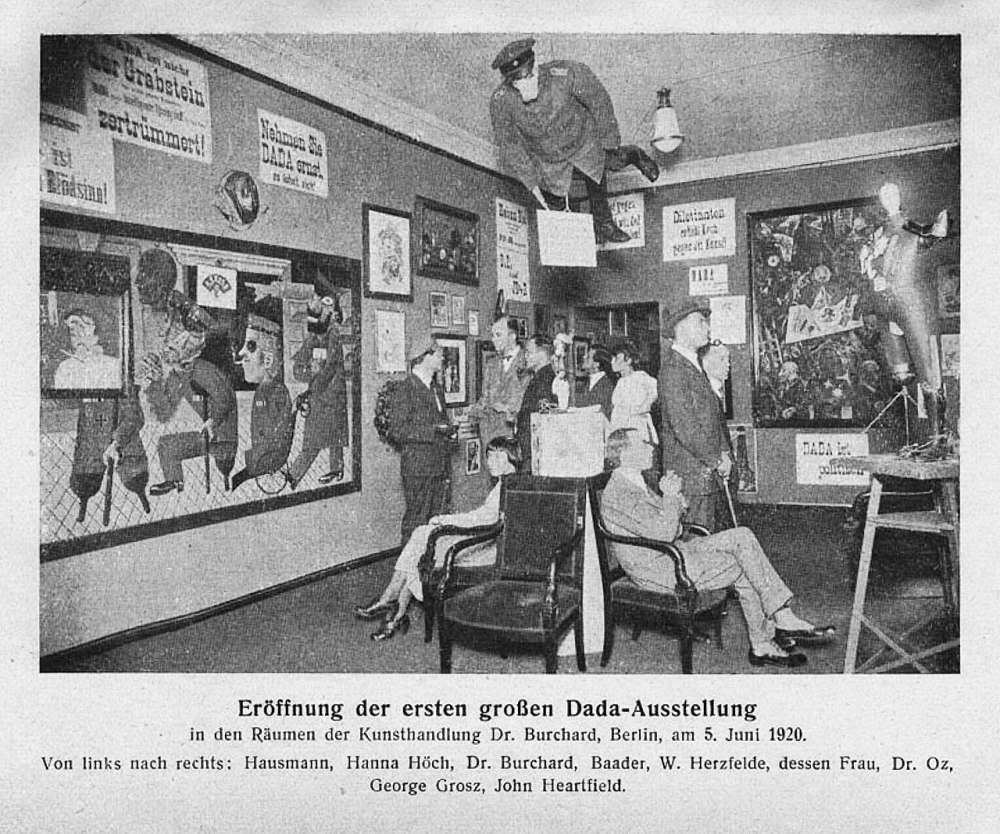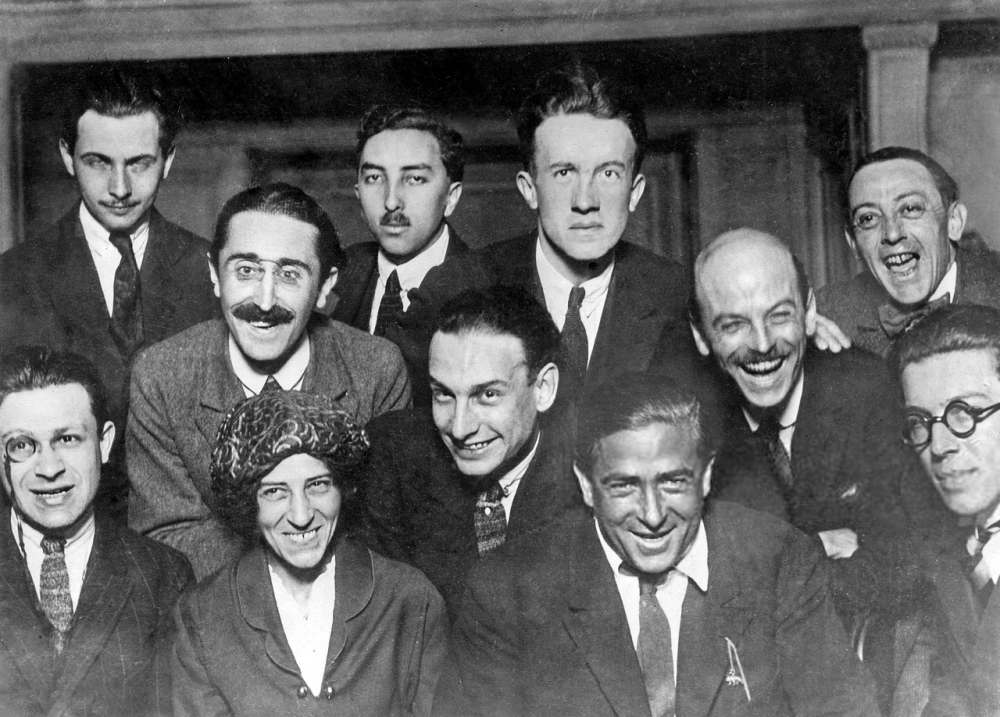In the early 20th century, something wild happened in the world of art. It was like a storm, shaking up everything people thought they knew about creativity. This uproar was the Dada movement. Dadaists were like rebellious artists, but instead of paint brushes and canvases, they used chaos and absurdity. They didn’t care much for rules or tradition. They wanted to shock people, to make them question what art really was. But it wasn’t just about being silly. Dadaists were serious about shaking up society, too. Ultimately, it led to the change of conventional art norms. How? Let’s find out.
Dada Movement’s Impact on Conventional Art Norms
The Dada movement is still considered to be one of the most significant influences on conventional art norms for the following important reasons.
Embrace of Absurdity
Dada artists shook up the art world by saying “no thanks” to the usual ways of making art. They looked at the old rules of painting and sculpture and said, “We’re done with that.” Instead of following traditional values like beauty or skill, they went for something different. They chose chaos over order, nonsense over sense. It was like they were painting with a crazy brush, using colors that didn’t match and shapes that didn’t make sense.
In the world of Dada, absurdity was king. Artists embraced the weird and the wild, creating works that made people scratch their heads in confusion. Take, for example, Marcel Duchamp’s “Fountain.” It was just a regular old urinal, flipped on its back and signed with a fake name. People were baffled. How could this be art? But that was the point. Dadaists wanted to challenge people’s ideas about what counted as art. It wasn’t about pretty pictures or skillful sculptures. It was about making a statement, even if that statement was, “This is ridiculous.”
Another Dada favorite was the “L.H.O.O.Q.” by Duchamp. It was a simple postcard of the Mona Lisa with a silly mustache and goatee drawn on it. Again, people were left scratching their heads. Was this a joke? Was it disrespectful? Maybe. But it was also a slap in the face to the stuffy art world, saying, “We don’t take ourselves too seriously, and neither should you”.
Anti-Art Manifesto
The Dadaists weren’t just about making weird art; they had a bone to pick with society too. They looked around and saw a world obsessed with money and status, and they weren’t having it. They believed that the fancy art world was just another part of the problem. So, they decided to give it a big ol’ thumbs-down.
First off, they had some strong words for the upper-class folks running the show. They called them out for being snobby and out of touch, more interested in showing off than making real art. The Dadaists wanted to shake things up, to show that art could be for everyone, not just the elite.
But they didn’t stop there. They also had a bone to pick with the fancy art institutions. You know, those big museums and galleries that decided what was “good” art and what was garbage. The Dadaists said, “No thanks.” They didn’t want to play by their rules or hang their art on their walls. They wanted to do things their way, even if it meant causing a ruckus.
And that’s where the anti-art manifesto came in. It was their way of saying, “We’re not here to make pretty pictures for your fancy parties. We’re here to shake things up, to make you question everything you thought you knew about art.” They saw anti-art as a form of protest, a way to stick it to the man and say, “We’re not buying what you’re selling”. It was just another unusual form of art no one could explain!
Use of Ready-Mades
The Dadaists had a knack for turning everyday stuff into art. They didn’t need fancy paints or expensive materials; they could make art out of anything they found lying around. That’s where the ready-mades came in. These were just regular objects—like a bicycle wheel or a urinal—that the Dadaists plucked from the real world and plopped into the art world.
But it wasn’t just about sticking a random object on a pedestal and calling it art. No, the Dadaists were making a statement. They were saying, “Hey, why do we need fancy materials to make art? Why can’t a simple everyday object be just as valuable?” It was like they were giving a big ol’ middle finger to the idea of craftsmanship and skill. Who needs to spend years perfecting their craft when you can just grab a urinal and call it a day?
And speaking of value, that’s another thing the Dadaists liked to poke at. They questioned the whole idea of what makes something valuable in the art world. Is it the materials? The skill of the artist? The meaning behind the piece? The Dadaists said, “Forget all that.” They were more interested in making people think, in challenging their ideas about art and beauty.
Performance and Cabaret Voltaire
The Dadaists weren’t just about making art you could hang on a wall; they wanted to bring it to life. That’s where performance came in. They liked to mix things up, blurring the lines between art and entertainment. It was like they were putting on a big show, with wild costumes, strange music, and lots of shouting.
But it wasn’t just about putting on a good performance. The Dadaists were also using it as a way to try out new things. They wanted to push the boundaries of what art could be, to see how far they could stretch it. So, they’d get up on stage and do all sorts of crazy stuff—like reciting nonsense poetry or banging on pots and pans. It was all about experimentation, about seeing what worked and what didn’t.
And while they were up there, they weren’t just performing for the audience; they were challenging them too. The Dadaists didn’t want passive spectators who would just sit back and watch; they wanted people to get involved, to think and question and react. So, they’d do things to shock and surprise them, to make them sit up and take notice.
Political Activism
The Dadaists weren’t just about making art for art’s sake; they had something to say about the world around them, especially when it came to politics. They saw the chaos and turmoil of the early 20th century and decided they couldn’t just sit back and watch. So, they got involved.
One of the big things the Dadaists were concerned about was the rise of nationalism, militarism, and authoritarianism. They saw these things tearing the world apart, leading to war and oppression. So, they decided to speak out against them, using their art as a weapon.
They didn’t hold back, either. The Dadaists were loud and proud in their critique of these forces. They made posters and paintings mocking leaders and governments, calling them out for their greed and corruption. They saw themselves as the voice of the people, standing up for the little guy against the powers that be.
But they didn’t stop there. The Dadaists also used their art to try to bring about social change. They saw art as a powerful tool, a way to get people thinking and talking about the issues that mattered. So, they organized exhibitions and performances, using their creativity to shine a light on injustice and inequality.
And it worked. People started paying attention. The Dadaists’ boldness and bravery inspired others to join the fight for a better world. They showed that art wasn’t just about pretty pictures or fancy sculptures; it was about making a difference, about standing up for what you believe in.
Final Words
The Dada movement was one of the wildest art movements that was lost. It was indeed a wild ride that shook up the art world and challenged the status quo. From embracing absurdity to critiquing society and engaging in political activism, the Dadaists left a lasting impact on art and culture. Their willingness to question tradition and push boundaries paved the way for new forms of expression and social change. While their movement eventually faded, their legacy lives on, reminding us that art can be a powerful tool for challenging norms, sparking dialogue, and shaping the world we live in.


